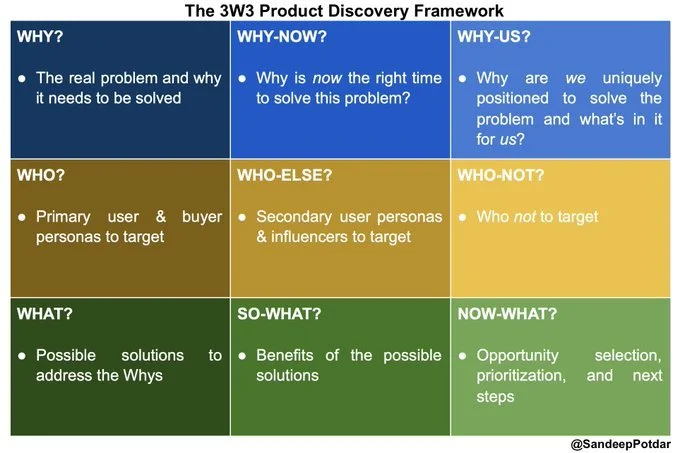One way product managers can be most effective is by having a process to get to the answers they need quickly and consistently. To find organization in the chaos of a new project or initiative, product managers can use framework thinking.
Framework thinkers are able to find clarity in complex situations. Further, good frameworks can bring focus to everyone's thinking, allowing the team to prioritize the questions that really matter. Framework thinkers make more progress because they remove the clutter and roadblocks for their teams.
Frameworks and mental models are abundant. There are some that are too specific in other areas to apply directly to product management, but almost all of them have something useful to take away. You can find much written about them, as companies and institutions who develop them have a strong incentive to promote them. The specific model becomes part of their brand, their unique selling proposition, and eventually recruitment tools. Some become whole books or treatise, which may or may not actually be the point of a framework. It should be easy to remember and simple to employ.
PMs can start researching specific frameworks for product management to provide structure. You want to build a personal catalog of these that you can lean on when faced with a problem or complex initiative. But looking widely at general business or thinking frameworks can also make you a better product manager (and more well-rounded person). Any of these require a bit more research into the methodology, as well as some trial and error in the application of it.
STAND-UP EXERCISE
Ask the team to read (or listen to) Product Management Mental Models for Everyone, which highlights frameworks in the categories of Investment, Design/Scope, and Shipping/Iterating. I asked my team specifically to reference models 5-12 in the designing and scoping section.
For stand-up discuss if anyone sees where these frameworks might have been useful to have in past projects. Ask if anyone has additional frameworks they use regularly, or have seen used at other employers. Do any of these contradict each other? Are there some that seem better suited for the culture or content of your team than others? Which can you immediately begin using, or using elements of?






